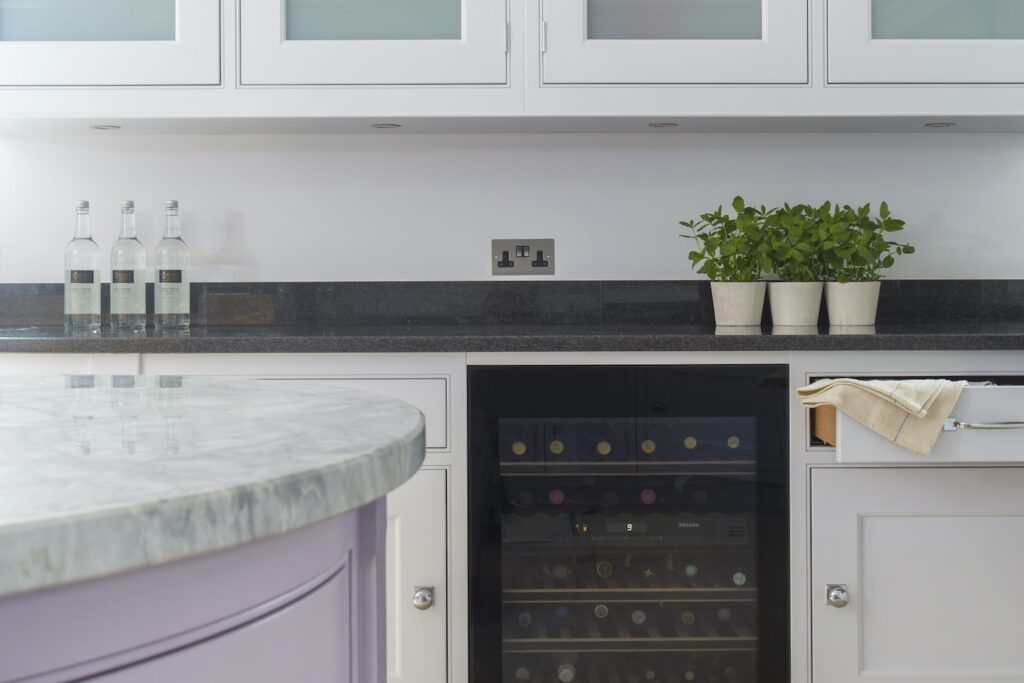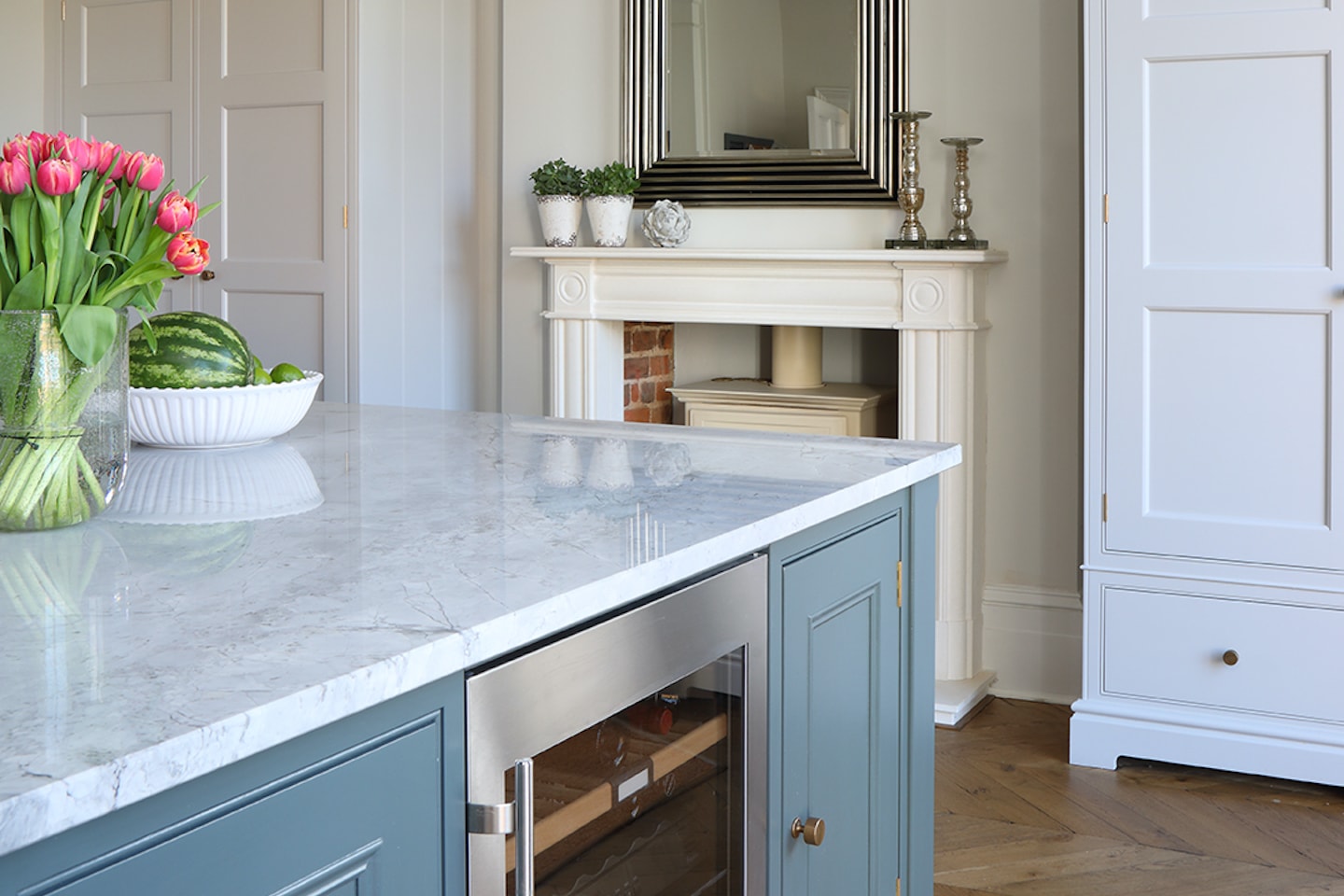The Best Materials for Luxury Kitchen Worktops
When it comes to designing a luxury kitchen, the choice of worktop material is one of the most important decisions to make. Not only does it have to look beautiful, but it also needs to be durable and functional enough to withstand everyday use. In this post, we’ll explore some of the best materials available for luxury kitchen worktops to help you make an informed decision for your home.
Granite
Granite has been a popular choice for kitchen worktops for many years thanks to its durability and natural beauty. It is a natural stone that is resistant to scratches, stains, and heat, making it one of the most durable materials available. Granite also comes in a variety of colours and patterns, which makes it easy to match with different kitchen designs.
Benefits:
Durability: Granite is one of the most durable materials available and can last for many years if properly maintained.
Heat resistance: Granite can withstand high temperatures without being damaged, making it perfect for a kitchen worktop, it is also highly resistant to scratching and staining and the beautiful lustre can easily be maintained with a mild detergent and soft cloth.
Unique Design: As a natural material, each piece of Granite is totally unique with a different pattern, grain and texture. Using Granite as a worktop will give your kitchen a distinctive and individual appearance and the huge variety of styles available makes it easy to match with different kitchen designs.
Negative Points:
Porosity: Granite is porous and requires annual sealing to prevent staining.
Weight: Granite is a heavy material, which may require additional support during installation.
Marble
Marble is a luxurious and elegant material that can instantly transform the look of a kitchen. It is a natural stone that is known for its unique veining and soft colours. Marble is a popular choice for luxury kitchen worktops thanks to its timeless beauty and durability.
Benefits:
Luxury effect: Marble has been used as a building material for thousands of years, and it still remains a popular choice for luxury designs today.
Durability: While marble is not as durable as granite, it is still resistant to everyday scratches and heat and is easy to maintain.
Unique veining: As a natural stone each piece of marble is unique, which makes every worktop one-of-a-kind.
Negative Points:
Porosity: Marble is porous and requires regular sealing to prevent staining.
Softness: Marble is a soft stone that can be scratched easily by sharp objects and is especially vulnerable to household acids such as vinegar and citrus, so all spills need to be quickly wiped away as they can cause staining if left standing.
Quartz
Quartz is a man-made material that is created from natural quartz crystals and resin. It has become a popular choice for kitchen worktops as it has all the durability of granite and marble but is non-porous so does not require sealing and is totally resistant to staining. Quartz can be found in a wider range of colours and patterns than natural stone, which makes it easy to match with different kitchen designs.
Benefits:
Durability: Quartz is one of the most durable materials available and is resistant to scratches, stains, and heat.
Low maintenance: Because quartz is non-porous, it does not require sealing or polishing like natural stone materials.
Consistent colours and patterns: Unlike natural stone materials, quartz is uniform in colour and pattern, which makes it easy to match different pieces for a seamless look and is ideal for those that prefer a more contemporary looking worktop.
Negative Points:
Heat resistance: While quartz is heat resistant, it is not recommended to place hot pots directly on the surface.
Price: Quartz can be more expensive than natural stone materials.
Wood
Wood has been used as a building material for thousands of years and remains a popular choice for luxury kitchen worktops today. Wooden worktops add warmth and character to a kitchen and are known for their unique grain patterns. There are several types of wood used for worktops, including oak, walnut, and cherry. Wooden worktops require more maintenance than other types of worktop to keep them looking pristine, for this reason we tend to use them as part of the overall design, perhaps as a breakfast bar area at the end of a worktop or as a butchers block, as opposed to a full run of worktop space.
Benefits:
Natural beauty: Natural wood adds warmth to a kitchen and the unique grain patterns make for an individual worktop that is full of character.
Durability: With proper maintenance, wooden worktops can be very durable and long-lasting.
Can be refinished: Wooden worktops can be sanded and refinished if they become worn over time rather than replaced which is a greener alternative.
Negative Points:
Regular maintenance: Wooden worktops can be susceptible to scratches, staining and water damage. They require regular maintenance to keep them looking their best. It is best to avoid siting wooden worktops around a sink area where there may be standing water.
Not heat resistant: Wooden worktops are not heat resistant and can be damaged by hot pots and pans so they will require heat protection at all times.
Conclusion
When it comes to luxury kitchen worktops, the choice of material will depend on your personal preferences and lifestyle. Each material has its own unique benefits and negative points, which should be carefully considered before making a decision. By choosing a material that is both beautiful and functional, you can create a distinctive kitchen that will be the envy of all your friends and family.



